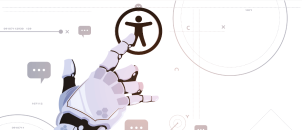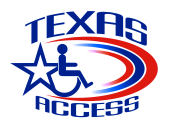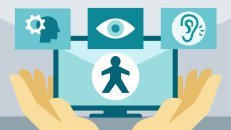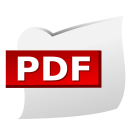Because the internet is an integral part of modern life, every organization with an internet presence needs to provide equal access and opportunity for all the site’s visitors, whether non-disabled or disabled, with a cognitive or physical disability. This simply means, ensuring web accessibility and providing access to site visitors with disabilities who may need specific accommodations. Accessibility statement is your organization’s opportunity to communicate its commitment to address your website’s accessibility to your customers, and the wider community. Ensuring accessibility of your website and mobile app is not a one-time project, this is especially where an accessibility statement on the site can come in handy, it shows your web users the current status of your website’s accessibility by describing the accessibility issues and your accessibility-related efforts.
What is an Accessibility Statement ?
An Accessibility statement is a message from owners of the website, mobile application, or other digital content to the visitors about the accessibility of the site, and where to get information or leave feedback if the product or service is not accessible. It is specifically intended to be used by people with disabilities to help them understand the accessibility of sites (website or app), instructions on its compatibility with specific accessibility technology available on the site, and know where to navigate or who to contact should they encounter accessibility issues on the site.
Although a statement of accessibility on the site has the specific purpose of supporting consistent reporting of the accessibility of websites and mobile applications, it has secondary purposes such as organizational, local, or national requirements. Accessibility statements can be published by organizations to demonstrate internal accessibility policies and digital accessibility protocols, to show the organization’s commitment to adhere to accessibility requirements and established guidelines in the geographies it operates, and to support the monitoring.
See example of an Accessibility Statement
Organizations operating in the EU member countries are mandated to meet the EU Web Accessibility Directive – EN 301 549 requirements which have demanded the publishing of an accessibility statement on the site and referenced the international standard for making web content accessible, WCAG 2.1 Level AA. Similarly, UK public sector bodies must make their website and mobile app accessible to everyone and publish a declaration on the accessibility of the site. In the United States, government organizations must meet the Americans with Disabilities Act (ADA), and Section 508 of the Rehabilitation Act requirements together with their vendors and contractors. This simply means such a vendor’s level of conformance will be monitored, hence, the need for an accessibility statement for making conformance claims and avoiding lawsuits.
Hence, an accessibility statement:
- Is a communication instrument by the owners of websites and mobile applications
- Could be voluntarily or required
- Provide a site’s accessibility information to users of your content
- Support consistent reporting of a site’s accessibility by the owners to the web users
- Primarily aimed at users with disabilities and other users
- It could also be aimed at government agencies, among other audiences who need information about the site’s conformity e.g. 508 compliance, EN 301 549, etc.
- Describe accessible alternatives, and accessibility support for inaccessible content to web users.
- Helps organizations comply with accessibility requirements and explains conformity with WCAG 2.0/2.1 AA guidelines.
- Support a harmonized reporting of challenges web users face by providing a link to a feedback mechanism.
- Could describe other measures taken to promote accessibility of the site.
- A living ‘document’ with built-in flexibility and processes to review and update.
What an Accessibility Statement is not
Accessibility statement is meant to be referred to when people encounter problems, hence it should be devoid of technical terms and be written in simple language. Although having an accessibility statement will demonstrate a commitment to accessibility and outline your ongoing process to ensure your site consistently meet the need of web users, it is not a protector against lawsuits. Accessibility statements are not declarations of conformity, nor are they accessibility checklists, although they refer to technical documents and guidelines to provide verification and increase their credibility.
It will be important to also clarify that an organization’s accessibility statement is not a substitute for the organization’s accessibility policy. The policy describes how accessibility integrates with the organization’s philosophy and operations while the statement reflects the organization’s policy.
Why do you need an Accessibility Statement?
The need to integrate accessibility into an organization’s process of web design and development can’t be overstated- see Accessible Web Design & Development: [Doing It Right]. While the primary driver for some organizations adopting accessibility could be compliance with regulations (such as 508 compliance), there are good incentives for innovative organizations that can utilize the opportunity to demonstrate the organization’s commitment to the different communities of web users. Some notable benefits of having an accessibility statement include:
- To show the organization’s commitment to accessibility and social responsibility of making the website and app available to everyone.
- To show how much you care about the accessibility of every web user.
- To provide web users with information about the accessibility of your content such as problems on the website and alternatives to gain access.
- To meet the country’s requirement to provide an accessibility statement.
Checklist (Essential and Optional Information) of an Accessibility Statement
An accessibility statement is prepared to provide an update about accessibility and conformance with the web content accessibility 2.1 checklist. Hence, the statement itself must be WCAG-conformant and published/provided in an accessible format and must be human and machine-readable in order to help users who refer to it, and not frustrate or confuse them.
So other than accessibility, what are the requirements of an effective accessibility statement?
- Organization information: This part should detail the name of the organization, its URL, and the official name of the website or app with its version information and date. It should also include an introductory paragraph of what the accessibility statement is all about with a brief of your organization’s commitment to accessibility for individuals with disabilities.
- Description of site and scope: This part should briefly describe the website or app, state what part of the website or app the accessibility statement does not cover, and the last modified date.
- Conformance status: It should detail the standard followed to be accessible such as WCAG 2.0/2.1 AA. This part describes to what degree the website or mobile app meets the standard/guideline (whether it is fully or partially conformant, non-conformant, or no assessment) available). and details about the evaluation methodology to draw those accessibility conclusions (such as screen reader tests, policies on supported web browsers, etc.).
- Contact information: This part is meant to guide the user on how to contact the organization or get assistance for non-accessible content. The statement must include feedback options to allow users to connect when they encounter accessibility issues.
- Additional accessibility information: Provide information to guide the understanding of the accessibility statement. Explain any known limitations, non-conforming parts, success criteria, why, and where guidelines don’t apply, and reasons for the selected accessible alternatives and accessibility tips.
- Feedback options: Give users an invitation to reach out to your organization about the accessibility statement. This could be a description or link to request information.
- Enforcement procedure: Provide a description of and refer to the applicable national laws and policies.
- Publication date: Ensure to provide the specific date the accessibility information and statement were last updated.
- The accessibility statement should be easy to locate on the site by being placed around the footer, about page, sitemap, and other prominent areas.
- Accessibility statements should have consistent link names across the content of the websites and mobile applications.
- The statement could contain the organization’s measures to support accessibility.
- It may also contain technical information to explain accessibility issues a user may encounter such as compatibility with browsers and assistive technology or plugins.
- Accessibility statements can also detail the assessment approach and the formal approval of the statement.
PS: Some situations require you to provide particular content in your accessibility statements. A good example is the EU Web Accessibility Directive – EN 301 549 which specifies requirements for accessibility statements.
Conclusion
An accessibility statement serves as a practical tool for communicating the organization’s commitment to accessibility and providing a point of connection for web users who may encounter issues on the site. However, it is far from the beginning or ending point of an organization’s accessibility process. It can detail organizational measures (internal policies such as mission statement, procurement practices, the inclusion of people with disabilities in the design, staff training) put in place to support your accessibility initiatives but shouldn’t be taken as a major criterion in your accessibility project.
Although the statement could be drafted for organizational, or national requirements, it sure serves the goal of keeping your organization on top of accessibility issues the site presents and a way of providing harmonized accessibility information to the public.
Want to know if your website is accessible to users with disabilities? Click the green button below to run a website test and generate a PDF report for free!







